Haweswater
Remote Haweswater is the most isolated and easterly of the lakes, situated to the south of Penrith. In common with Thirlmere, it serves as a reservoir providing the city of Manchester with its water and is owned by United Utilities.
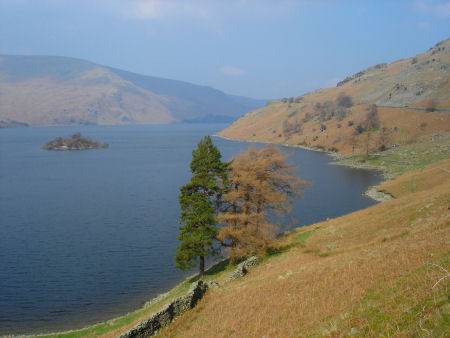
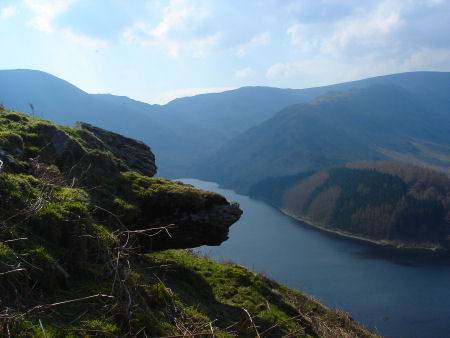
The four mile long lake, which has a maximum depth of 200 feet, was created in the 1940's, when it was realised that Thirlmere reservoir, created in 1894, was no longer sufficient to provide the city of Manchester with all its needs. Haweswater derives its name from the Old Norse hafs vatn, meaning 'Hafr's lake' or 'he-goat's lake'.
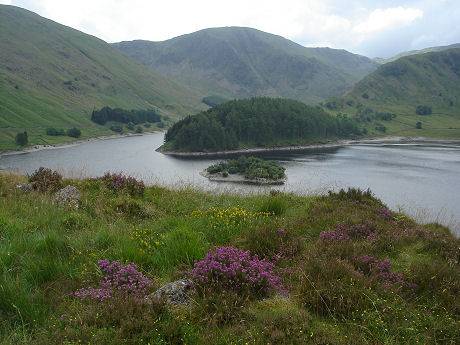
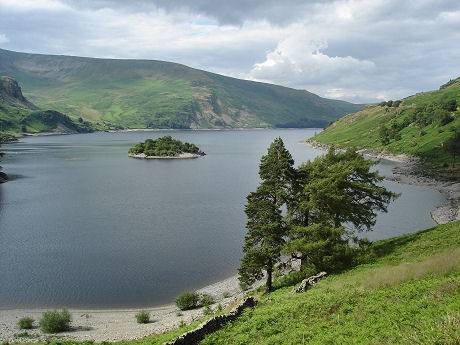
Haweswater and the nearby village of Mardale were purchased and by 1940 the level of the lake had been raised ninety-five feet by means of an enormous dam and Mardale totally submerged. Prior to the valley being flooded the farms and buildings of the villages of Mardale Green and Measand were demolished, including the Dun Bull Hotel at Mardale Green, which was centuries old. Stone from the village church was reused in the construction of the dam, which is situated at the northern end of the lake and measures 1550 feet wide and 120 feet high with a 56 feet walkway along the top.
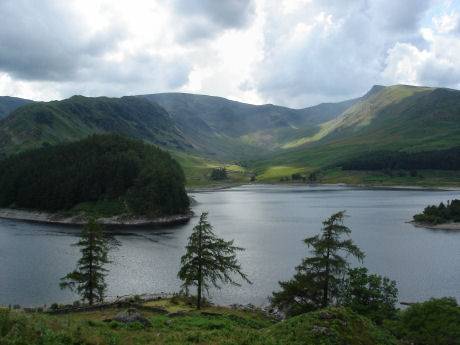
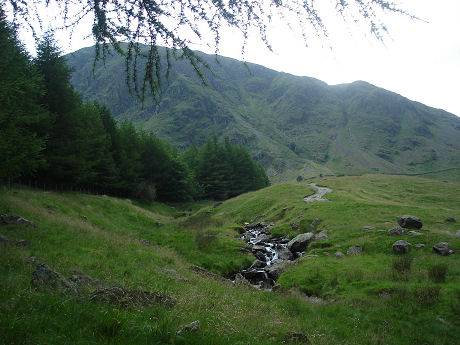
A new road was built along the east side of the lake to replace the flooded highway lower in the valley and the Haweswater Hotel was constructed as a replacement for the Dun Bull Inn. During the severe drought of 1984, the water level of the lake fell by sixty feet or more and the ghostly remains of the lost village of Mardale were briefly revealed . Compared with the natural lakes, Haweswater's shoreline can look bare and unsightly when the water level is down during periods of sustained dry weather.
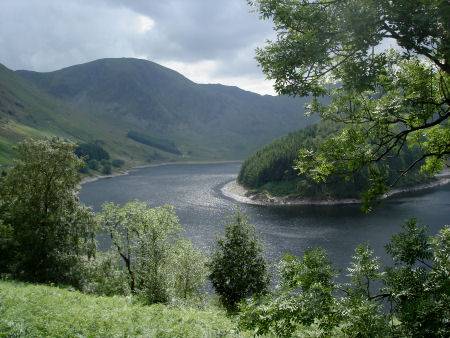
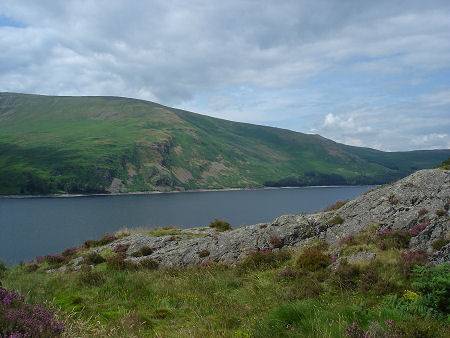
The lake and the valley in which Haweswater stands are a nature reserve. Woodpeckers, peregrine falcons and sparrow hawks inhabit the surrounding forests. Ring ouzels, wheatears and warblers can also be spotted. Red deer and red squirrels also inhabit the reserve. Dippers can be seen at the lake's edge and by the becks. A very rare fish, called a schelly, which is like a freshwater herring, is found in shoals in Haweswater, the only other places it is to be found are Ullswater and red tarn on Helvellyn.
Golden Eagles at Haweswater
Haweswater is justly famous for its golden eagles (Aquila chrysaetos). The Golden Eagle has returned to the Lake District after an absence of over two two hundred years. There is a RSPB observation post, situated at the western end of the lake in the remote valley of Riggindale, The first eagles to return to the Lake District nested in the valley in 1969, sixteen chicks have been produced to date, but none have fledged since 1996 and no eggs have been laid in four of the last five years. The current solo Golden Eagle at Haweswater is the only one in England. Conservationists are hoping to attract a female bird from Scotland to breed. The male bird at Haweswater is now around eight-years old.
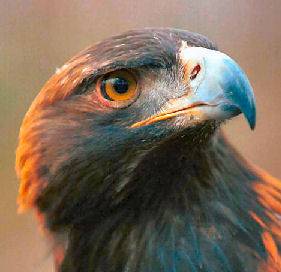
Golden Eagles are a large bird of prey with a wingspan measuring around six feet, the females are larger than the males. Adult golden eagles bear light golden brown plumage on their head, neck and shoulders. Their bodies are mostly a medium brown colour with lighter mottling and golden talons.They feed on medium-sized mammals, including rodents, rabbits, hares and young deer. They also hunt birds (particularly grouse), and occasionally feed on reptiles. They often feed on carrion, including sheep and lambs. Golden eagles take several years to fully reach maturity and do not start breed until they are 4 - 5 years old. The breeding season continues almost all year. The females starts to lay 1 - 3 eggs in early to mid April and incubates them for about 43 days.
The birds prefer mountainous, often treeless, habitats, although they require large trees or rock faces for nesting.
The path to Four Stones Hill makes an interesting walk, which has an ancient Bronze Age site, with standing stones, cairns and a dewpond.
